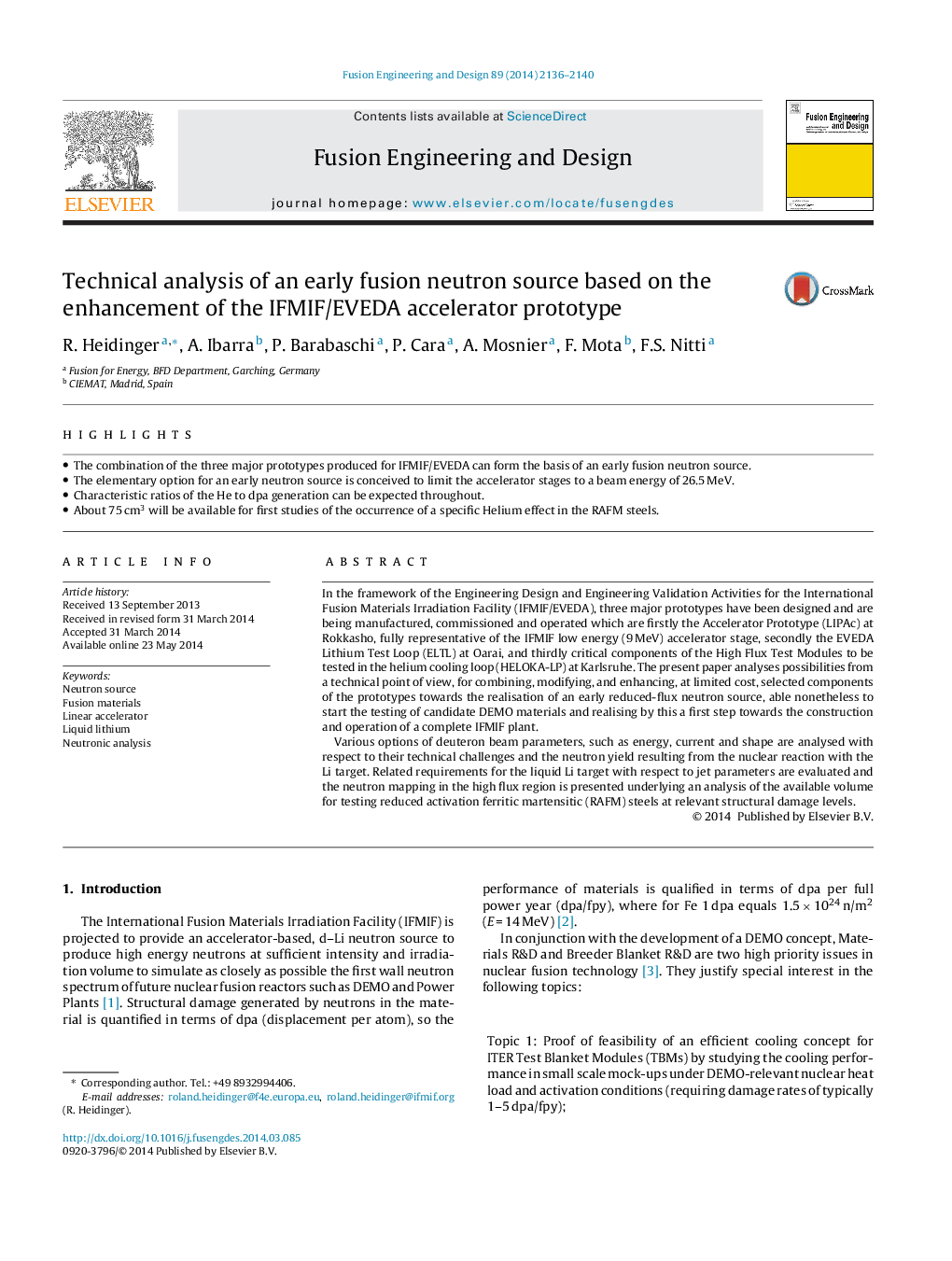| Article ID | Journal | Published Year | Pages | File Type |
|---|---|---|---|---|
| 271522 | Fusion Engineering and Design | 2014 | 5 Pages |
•The combination of the three major prototypes produced for IFMIF/EVEDA can form the basis of an early fusion neutron source.•The elementary option for an early neutron source is conceived to limit the accelerator stages to a beam energy of 26.5 MeV.•Characteristic ratios of the He to dpa generation can be expected throughout.•About 75 cm3 will be available for first studies of the occurrence of a specific Helium effect in the RAFM steels.
In the framework of the Engineering Design and Engineering Validation Activities for the International Fusion Materials Irradiation Facility (IFMIF/EVEDA), three major prototypes have been designed and are being manufactured, commissioned and operated which are firstly the Accelerator Prototype (LIPAc) at Rokkasho, fully representative of the IFMIF low energy (9 MeV) accelerator stage, secondly the EVEDA Lithium Test Loop (ELTL) at Oarai, and thirdly critical components of the High Flux Test Modules to be tested in the helium cooling loop (HELOKA-LP) at Karlsruhe. The present paper analyses possibilities from a technical point of view, for combining, modifying, and enhancing, at limited cost, selected components of the prototypes towards the realisation of an early reduced-flux neutron source, able nonetheless to start the testing of candidate DEMO materials and realising by this a first step towards the construction and operation of a complete IFMIF plant.Various options of deuteron beam parameters, such as energy, current and shape are analysed with respect to their technical challenges and the neutron yield resulting from the nuclear reaction with the Li target. Related requirements for the liquid Li target with respect to jet parameters are evaluated and the neutron mapping in the high flux region is presented underlying an analysis of the available volume for testing reduced activation ferritic martensitic (RAFM) steels at relevant structural damage levels.
